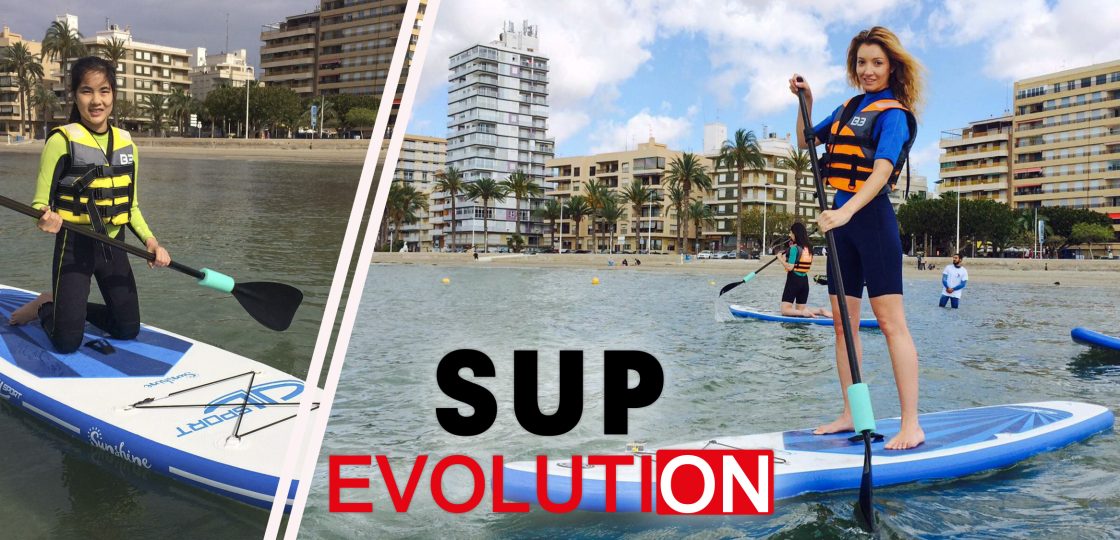SUP Evolution come back. A section dedicated to those who take their first steps in the world of Stand Up Paddle or Paddle Surf.
A few years ago, SUP Evolution was a brief section between the Up#28 and Up#31 magazines, excellent for many readers who were beginning to get started in the world of Stand Up Paddle and evolve their technique.
In this post, we show you the Terminology of Stand Up Paddle material and the Basic Stand Up Paddle positions. And if you are already an expert in this sport, do not hesitate to share this material with those who may need it…Thank you very much!
TERMINOLOGY OF STAND UP PADDLE MATERIAL(PADDLE SURF)
In initiation, the mechanics of the sport is very simple: it is based on sliding through the water standing on the board helping us to paddle to move forward.
Now, do you know the basic parts of the materials we usually use? In this report, we will see it and the functionality of each of them.
BOARD
-Nose: It is the front of the board. Its shape varies depending on the type of board we use.
-Tail: It is the back of the board like the nose, its shape may vary according to the special features of the board. In the tail, the fins (keels) are located.
-Handle: It is a small handgrip that we find in the central part of our board and that serves to transport it. It can be embedded within the same board or protrude in the form of a screwed handle.
-Deck: It is the area of the board where we are located, covered by a softer material than the rest and which is also rough; these two features give you greater comfort, especially when you go to your knees and prevent us from slipping.
-Bottom: It is the bottom of the board, which is in contact with the water.
-Fins: It is at the bottom of our board. Normally we have between one or three in the Stand Up Paddle. But, in the SUP wave boards, there can be up to 4. These allow us to control the direction of our board, they are in charge of giving us control over the course.
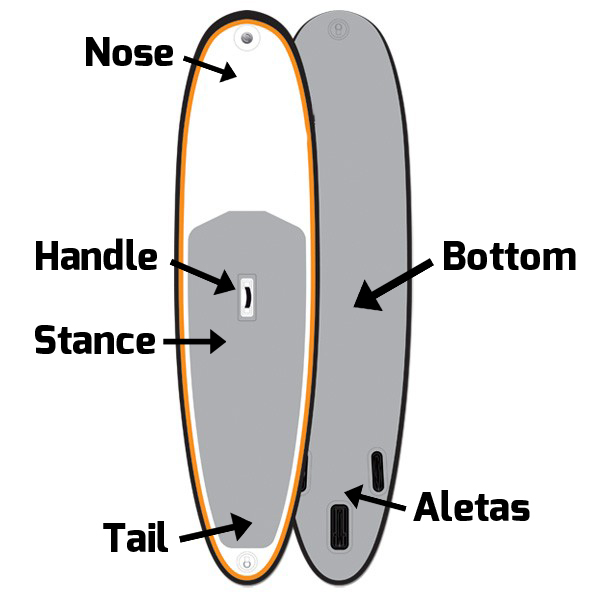
PADDLE
– “T”: Es la parte superior del remo. Suele ser ergonómica por lo que nos indicara la correcta posición del remo.
-Regulator: Not all paddle have this piece since not all are adjustable. As the name implies, this part has the function of regulating the height of our paddle.
-Pole: It is the longitudinal part that goes from the regulator to the neck of the blade.
–Blade: Widest area of the oar that we will use to drag the water and thus achieve the movement of the board.
–Neck of the blade: It is the union of the pole and the blade.
–The tilt of the blade: This angular deviation helps us to have better propulsion when we paddling. This inclination must always be oriented forward. We will maintain the inclination of the blade in this way whatever the position in which we are paddling.
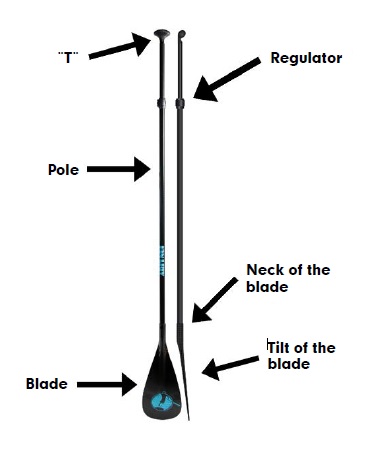
BASIC STAND UP PADDLE POSITIONS
In this section, we are going to develop which are the main positions with which we find ourselves when playing this sport and the utility that each one of them has. You have to know them perfectly and practice them even if they seem simple, since all of them can get us out of trouble in a few circumstances.
SECURITY POSICIÓN:
It is the most important and least practised position. Many people AMATEUR and even PROFESSIONAL do not get to know the importance of this technique. The benefits of this first position will be, an easy familiarization about the weights in our board and help and rescue position in case of an emergency.
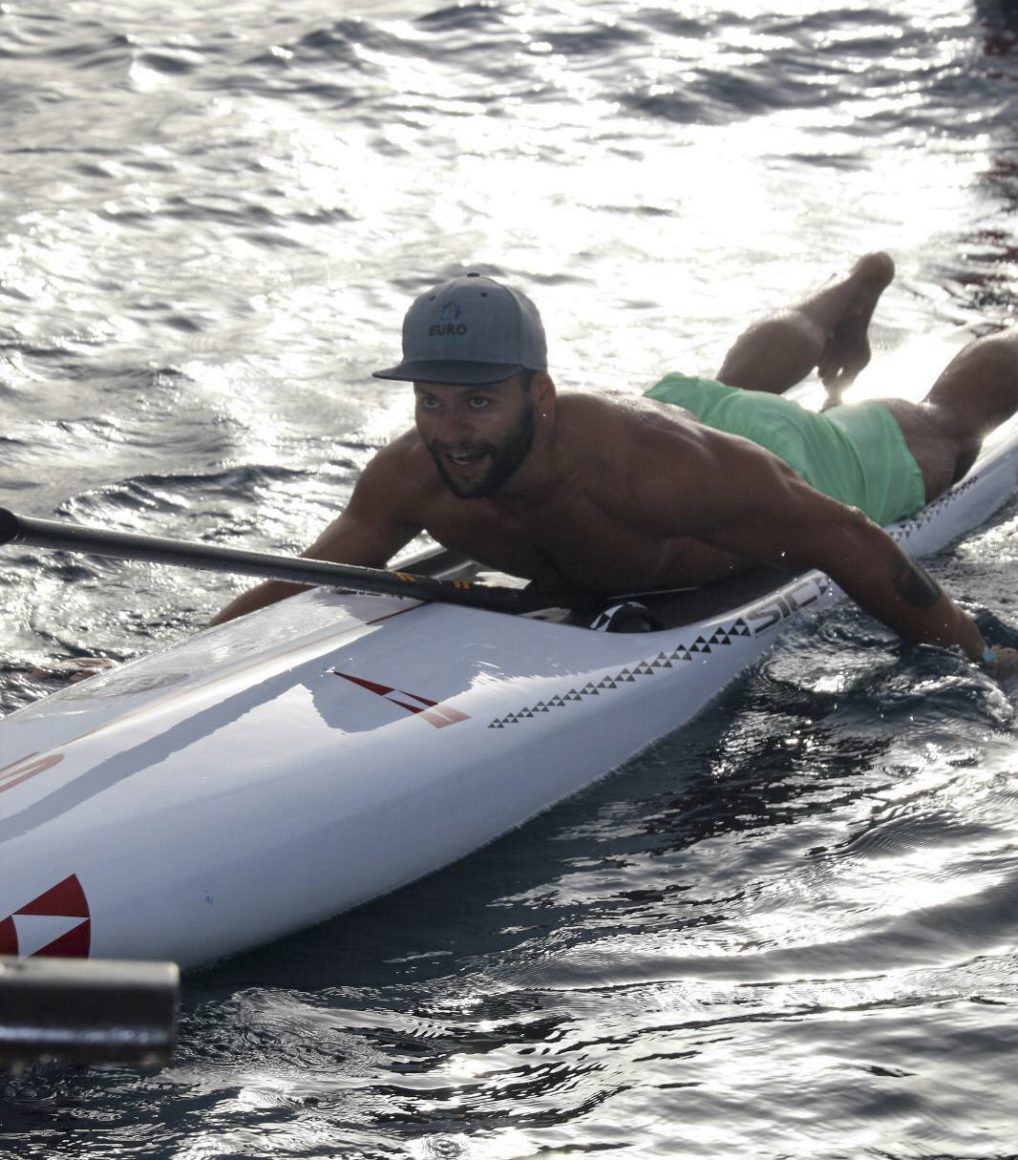
We will be centred on the board face down, making sure that our “nose” neither sinks nor is too raised,
The paddle will go under our chest so as not to lose it while we move and very important: we will place the back of the paddle of our paddle against the board. This way we will get the pole up and, in addition to not being uncomfortable due to a bad position (if the front part of the paddle is supported on the board, the inclination will make us very uncomfortable keeping it in our chest), we will have the paddle ready in case we need a rescue (we will see this technique in another article)
This position is also used to pass a breaker, to move if we lose the paddle or to return to land in case we are faced with a dangerous situation such as a thunderstorm or strong winds that prevent us from moving forward normally.
POSITION 2 or knees:
Once we have become accustomed to the material, the next step is to get on our knees to start propulsion with the paddle.
We will focus on the board, making sure it goes flat on the water. As a general rule, the handle will mark the central area of the board. If we keep this piece between our legs, we will most likely be totally centered on our board.
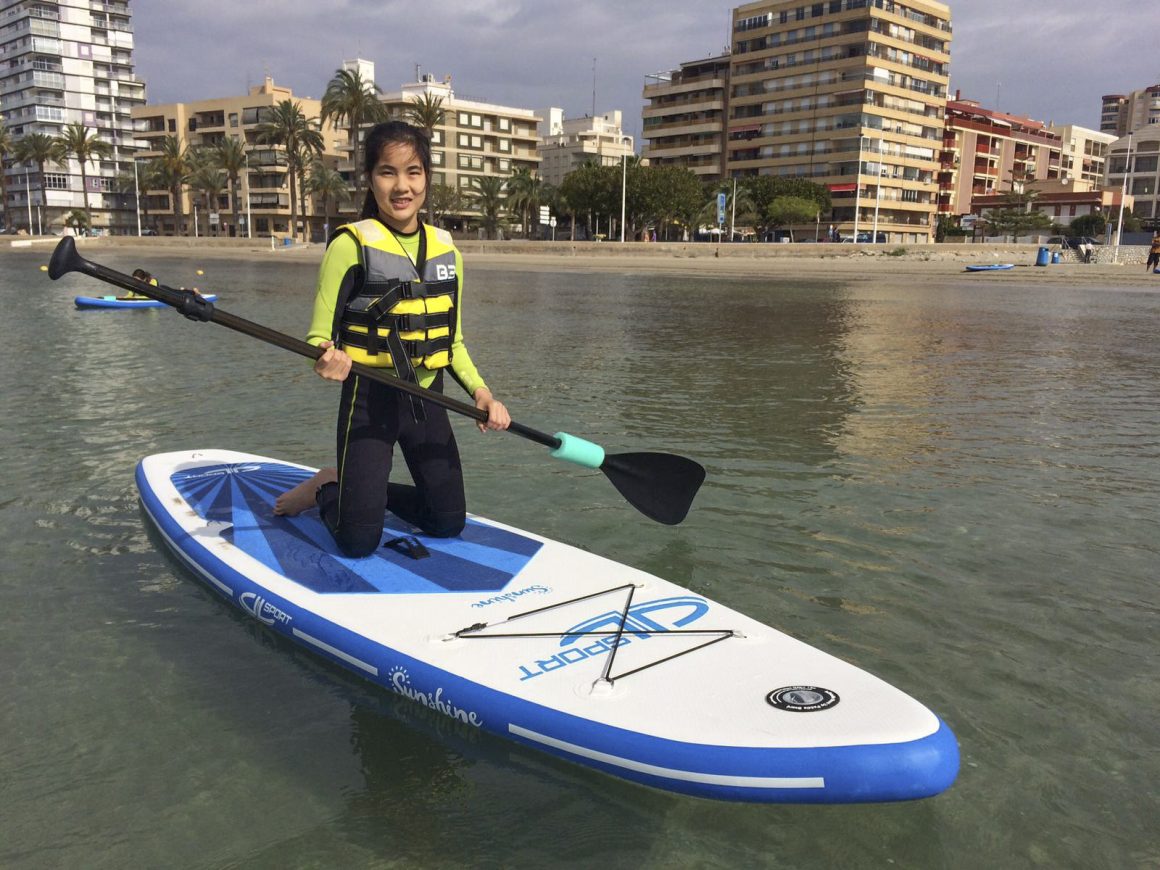
We will take the paddle from the regulator with one hand and approximately two spans from the paddle with the other. It is important to keep in mind that if we paddle on the right side of the board, the hand that will occupy the lower part of the paddle will be the right and that when we paddle on the left, we will have to change the position of the hands being now the left one it occupies the lowest place and the highest right. If we forget this step of changing hands the paddling will be uncomfortable and ineffective.
Knee paddling is very effective in cases of strong wind or swell (we have less wind resistance and more balance), in addition, it will help us a lot in case of rescue since we can exert more force in the early stages of our evolution
POSITION 3 or standing:
This is the last step to fully enjoy the experience of this wonderful sport. Once we control the paddle in position 2, the next thing is to stand up.
First, we will cross the paddle on the board to make sure that it does not fall out while we get up, and gradually go up with it until we are upright. It is important to always have three support points, that is, we will keep our hands on the board until we have both feet correctly positioned.
We will position the feet in parallel in the centre of the board, with the handle between our feet and separated enough to keep a good balance.
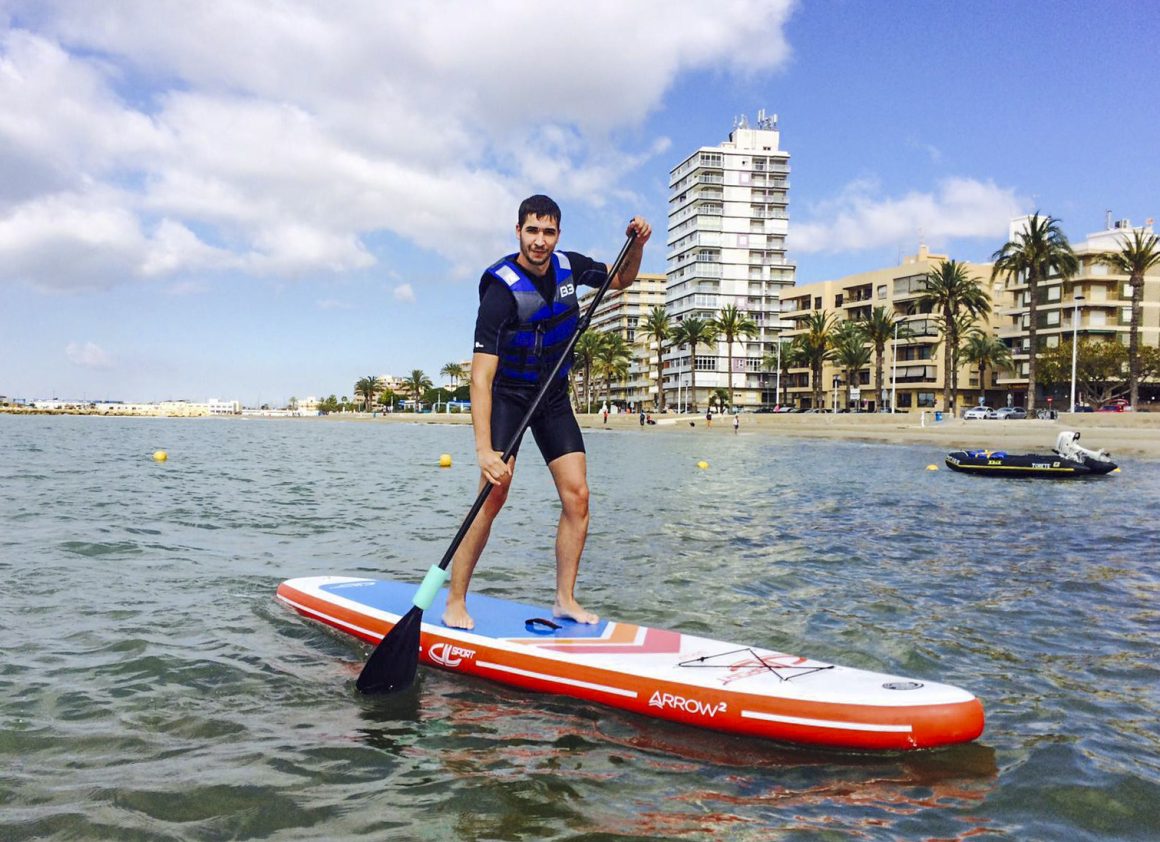
In this position, as in the previous one, the hand that is below is the same as the one we paddled, while the other goes up a little more to grab the “T” or pommel
We must start paddling as soon as possible because, having some speed, stability is easier.
We will try to take the paddle as far forward as possible to start the paddling and we will take it out of the water when it is at the height of our body, in addition, with practice, we should help our body by performing a flexion-extension movement with our legs while we paddle, thus transmitting all the force of the paddling to our feet and therefore to the board. We will see this in future reports.
